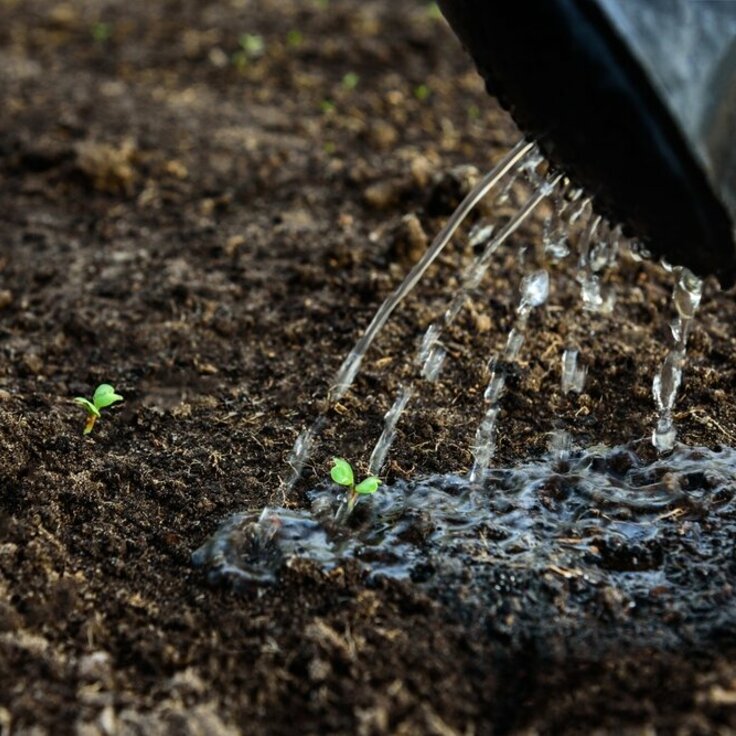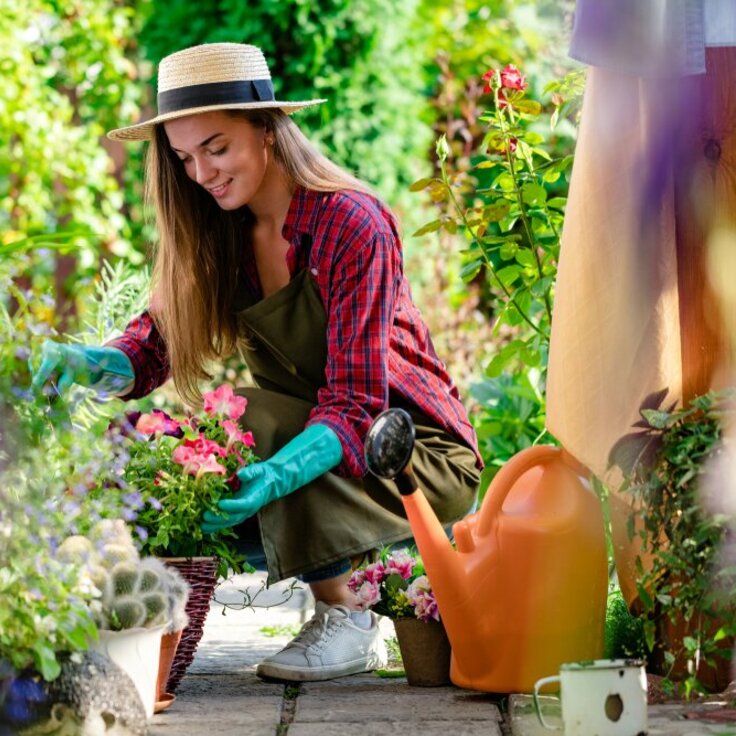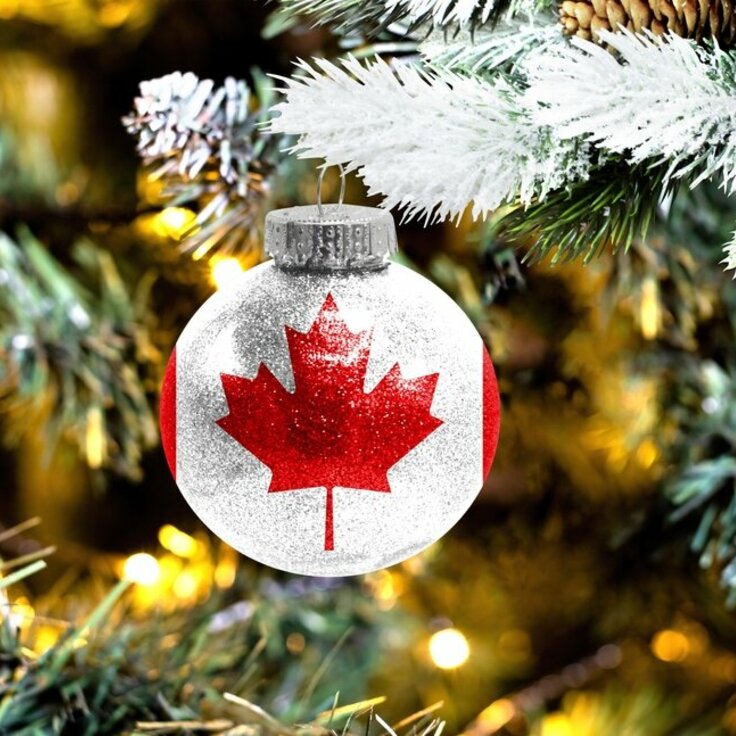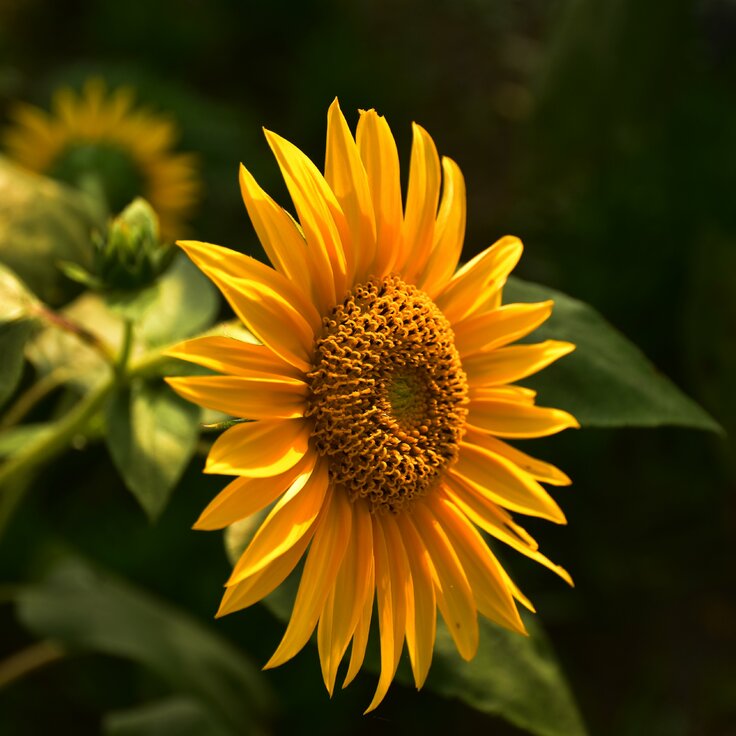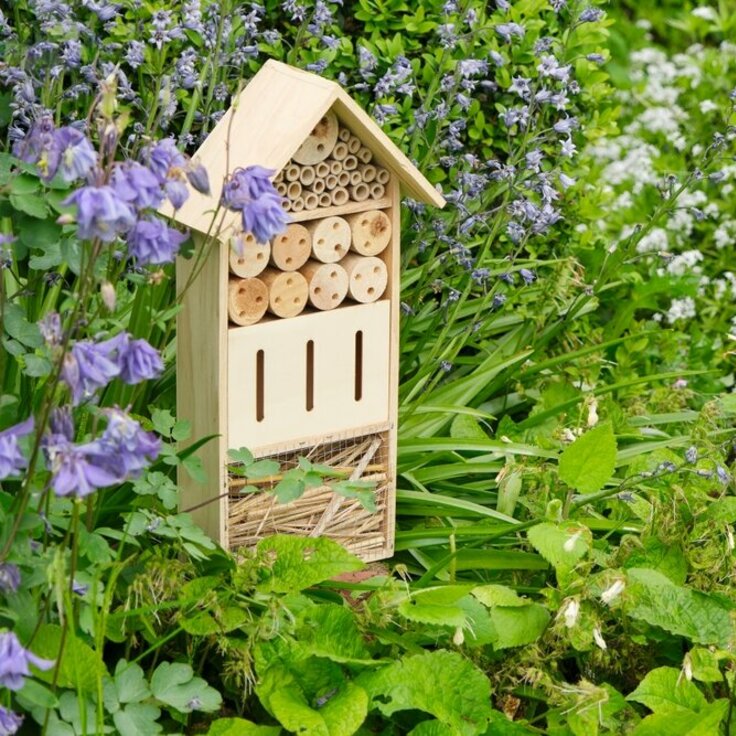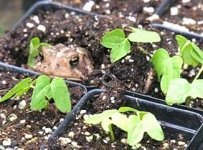Green Side Up: Planting an "Instant" Garden
If displays of bedding plants haven’t started showing up at your local chain store outlets, greenhouses and garden centers, supermarkets or even hardware stores, they will soon. And after a winter of not having had much to look at in the way of flowers and plants, you may find yourself irresistibly drawn to the rows of neat, green flats topped with buds and blooms as a dieter drawn to an ice cream sundae. But wait! Before rushing in and buying plants with the greatest eye appeal, take a moment to become a savvy shopper.
Selecting plants
Generally, bedding plants are grown in small “packs” divided into three, four, or six sections, each containing one or more growing plants (if you read a garden center ad for a sale on “6-packs,” think plants, not beer). Larger, plastic “flats” hold 12 to 24 packs. Packs are often individually priced a little higher than a whole flat, so, if you are so inclined, taking a pocket calculator with you when shopping can help you figure prices and number of plants quickly.
Unless you are buying a plant variety that is supposed to have purple, blue, rose, yellow or gray leaves, avoid those that do. This is an indication that the plants have been stressed in some way. Chances are they will recover, but let someone else worry about that. Look for plants with well-formed leaves of uniformly green color. Brown and damaged-looking leaves should be avoided, as should any signs of pests such as spider webs or small insects crawling over the plants. Be picky, after all, it is going to be your garden.
No doubt your immediate impulse will be to buy the packs or flats that have the most blooms on them. Retailers know this and encourage their suppliers to give them “lots of color.” But you are about to become a savvy shopper and learn why you want to avoid that temptation.
For the best success in your garden (beds or containers) you want to select plants without any blooms and even without buds if possible. Why? Because once the plants are transplanted to a new location, they need a little time to establish themselves. It’s something like moving to a new house or rearranging a room of furniture – until you get used to it, you just aren’t as productive as you were before. And the “energy” a plant spends on producing blooms takes away some of the “energy” it could be spending on establishing itself in your garden, and so the process takes a little longer. As a smart shopper, you want plants that will spend their immediate energy on getting established so that later they can get busy producing blooms in your garden.
Should you totally shun those plants in bloom? Of course not – they are your “samples” of what you can expect in your garden. Pick out those you want and carefully read the labels. Then find packs or flats of the same plants without blooms and buy those that are mostly green.
Once you’ve made your purchases, take the plants home. Place them on the seats or in the trunk (flats and packs are often dirty and wet on the bottom, so you might want to have a blanket or old shower curtain along), taking care not to stack them on top of each other or too loose so that they will tumble around and get damaged. If they are going to remain in the car for some time before you get home, protect them from too much sun. Even on a mild spring day, the sun can heat up a car considerably and possibly wilt or even kill your plants. Leave a window open a little to allow some air circulation, or open the trunk every now and then to let some fresh air in and allow built-up heat to escape.
Preparing for Planting
If you can’t plant immediately, store your plants in a protected area out of wind and free of danger or a late frost. Water as necessary, keeping them from drying out. If days are warm but nights are cold, you might want to put them outside during the day and move them to a more protected place such as the garage overnight.
If you haven’t already prepared your garden soil, work it to loosen it, add compost and use a granular fertilizer to make it ready for the plants.
When ready to plant, gently “pop” the individual plants out of their packs by pressing on the bottom of the pack. One easy method is to place one hand over the top of the pack, turn the pack upside down, and with your other hand press on the bottom of the pack to release the plants. Just be ready to catch any plants that may already be loose. Handle them with care, holding them by the ball of soil and roots, or by holding onto the central stem close to where it meets the soil.
Follow the recommended spacing (on the plant label or from a gardening book), and arrange and rearrange your plants on top of the garden bed until you have them where you want them. Then use a hand trowel to dig a hold for the plant. Put the plant in the hole and fill in around the plant firmly but not compacted too hard. You want the garden soil to just cover the top of the soil the plant is growing in, leaving the top of the green plant to catch the sunlight.
If there are any open blooms on your plants, ruthlessly pinch them off. Your plants will recover faster from the transplanting if you do.
Special Words about Vegetables
Some people find it hard to believe that the spacing recommendations for vegetables are right. Planting those “scrawny” tomato plants two feet apart, or allowing lots of space for melons and zucchini seems like an awfully generous thing to do. But once they get growing, those plants really do need all that space. For tomatoes and other vegetables that you will want to stake or cage, plant them and put the stake next to them or cage over them right away. If you do it later when the plants are bigger, you may end up damaging the plant or the root system. Do it all at once.
Gardens for Procrastinators and Those Who are Impatient
If you are late getting your garden planted, or are one of those people who kept waiting for the weather to “get better,” or you just “can’t wait” for plants to get larger, there’s still hope for planting an enviable garden. Bedding plant retailers often offer larger size plants for “instant” show in garden beds and containers. Frequently called “4-inch,” “6-inch,” “8-inch” and even “10-inch” plants, be aware that the size given is referring to the diameter of the container the plant is growing in, not the size of the plant itself. Supermarkets often advertise “10-inch house plants,” and you might be surprised to find a much larger plant than you expected, because the plant isn’t 10 inches tall (it’s probably taller and wider), it’s the container that is 10 inches across. The same is true for bedding plants advertising as “4-inch,” etc.
If you buy larger plants, plant them in your garden or containers as you would smaller plants. For spacing, measure from the center of one plant to the center of the next. Larger plants will need more water and fertilizer to get established, so be prepared to water a little more often at first.
Larger plants are often hard to find in the “green” stage and may be covered with blooms and buds. Again, to help the plants become established in their new home more quickly, ruthlessly pinch off any open blooms, but you can leave the buds.
On With the Show
Keep your plants watered and fertilized, take some time each week to pull out weeds that may appear in the garden, and watch your garden grow. Hanging baskets and plants in containers may need frequent watering during hot weather (sometimes even twice a day in really hot weather), so watch for signs of wilting.
Don’t be shy about your garden – it’s one of those things that everyone enjoys – so invite your neighbors over to see how well it’s doing. And, if you are like many gardeners, you’ll probably have extra vegetables you can share when things really get going, so share the abundance.
Take notes or photographs of your garden to plan for next year. If you really liked a certain variety, write it down so you won’t forget it next year when you go shopping (saving plant labels is one easy way of doing this). If you think you could use more of something next time, make a note of that, too. And if you think you could use a bigger garden, start planning early so you will be ready when the bedding plants are again available at your garden outlets.
Read more on planting an "Instant" Garden here from the National Garden Bureau


